#rail freight transport
Text
Cargo Count
Dracula isn't actually going to the King's Cross that Londoners know today and where people queue to pose with a trolley sticking out of a wall.
His overnight freight train is travelling to the Goods facility NW of the main station. Where he'll be unshipped with the potatoes, the milk and the fish, along with all the other goods needed to maintain the capital of the British Empire on a daily basis. The yard closed in the 1970s and after the general area around the station spent a while as a bit of a slum, it's been gentrified.
More info about the goods yard here:
https://www.lner.info/forums/viewtopic.php?t=13736
Then a long and fairly bumpy journey on horse and cart to Carfax in Purfleet near the Thames. The house is fictitious, but the town is still a nice place to visit.
49 notes
·
View notes
Text
Streamlining the Shipping Process: Step-by-Step Guide (+ Flow Chart)
Navigating international shipping can be complex, but with a structured approach and the right partners, it becomes manageable. International cargo transport, whether by air, road, or sea, involves multiple steps and adherence to various policies and regulations. Partnering with a reputable freight forwarder is key to ensuring a smooth shipping experience.
Here’s a step-by-step guide to the shipping process:
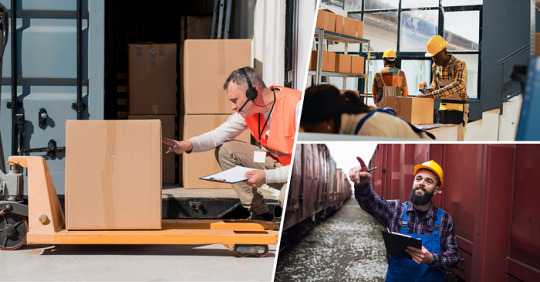
Request Freight Quote:
Provide details such as origin port, shipping date, commodity, destination port, package specifics, and freight requirements to freight forwarders.
Upon receiving the order, the importer initiates the shipping process.
The freight forwarder responds with an invoice containing a freight quote.
Select the Right Freight Forwarder:
Evaluate quotes from various freight forwarders and select the one that best meets your needs.
Consider factors like service offerings, network coverage, and real-time tracking capabilities.
Opt for a freight forwarder that aligns with your shipping requirements and provides visibility into the supply chain.
Arrange Necessary Documents:
Prepare essential documents required for international transactions, including:
Performa invoice for financing and import licensing.
Commercial invoice detailing buyer and seller information, merchandise description, and shipment details.
Package list indicating quantity, dimensions, and weight.
Origin certification to confirm country of origin.
Bill of lading issued by the carrier.
Shipper instruction letter for moving goods.
Bank draft for fund transfer.
Dangerous goods form for hazardous items.
Verify Shipment Details:
Double-check documents and verify shipment details such as B/L number, origin, container type, and references.
Booking Request or Delivery Order to Freight:
Book a freight provider based on confirmed details.
Share updated information with the freight forwarder, including origin, destination, container type, and dates.
Submit booking and payment to the shipping line.
Monitor Shipment Activities:
Track shipment online in real-time through the freight forwarder.
Access contract details, invoices, and other documents as needed.
Customs Clearance:
Goods undergo customs inspection at the entry port.
Customs officers review documents and ensure compliance with regulations.
Pay customs duties and taxes directly to the forwarder
Access Shipment:
Once cleared, obtain the shipment from the port.
Choose appropriate transport options for final delivery, such as LTL freight or tracking services.
Coordinate with the freight forwarder or transport company for seamless delivery.
Conclusion:
Understanding and following each step of the shipping process is crucial for successful cargo transport. Leveraging the expertise of freight forwarders ensures adherence to shipping procedures and meets business demands effectively. With careful planning and collaboration, businesses can streamline their shipping operations and optimize supply chain management.
0 notes
Text
Navigating the Tracks: Overcoming the Hurdles of Rail Freight
In the world of transportation and logistics, rail freight plays a crucial role in moving goods efficiently and sustainably from one point to another, serving as a cost-effective and environmentally friendly means of transportation over long distances. However, like other modes of transportation, rail freight also faces its own set of challenges. In this blog, we will discuss some of the main challenges that rail freight operators face and explore potential solutions to overcome them.
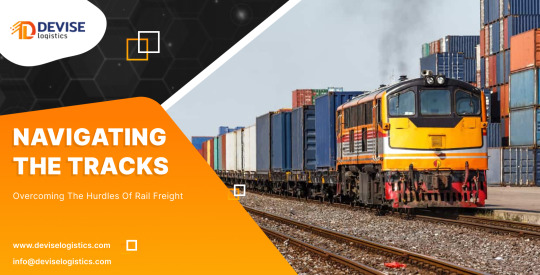
Infrastructure Constraints
One of the primary challenges faced by rail freight operators is the presence of infrastructure constraints. Many rail networks are outdated, congested, and unable to handle the growing demand for freight transportation. This results in delays, capacity constraints, and increased costs for rail operators and their customers.
To address this challenge, investment in infrastructure modernization and expansion is essential. Upgrading tracks, improving signalling systems, and building new terminals are just a few examples of how infrastructure can be enhanced to meet the needs of the rail freight industry.
Intermodal Competition
Rail freight faces tough competition from alternative transportation modes like trucking and air cargo. Trucks provide enhanced flexibility and the convenience of door-to-door delivery, while air cargo offers expedited transit times for time-sensitive shipments. This competition can make it challenging for rail operators to attract and retain customers.
To compete effectively with other modes of transportation, rail operators should focus on their strengths, such as lower costs, higher capacity, and lower environmental impact. They could also explore partnerships with trucking companies or intermodal transportation providers to offer customers a more comprehensive and efficient logistics solution.
Environmental Impact
As concerns about climate change and environmental sustainability grow, rail freight operators are facing increasing pressure to reduce their carbon footprint and minimize their impact on the environment. This can require significant investments in cleaner technologies and operational practices.
To meet environmental regulations, rail operators should invest in fuel-efficient locomotives, adopt alternative fuels such as biodiesel or natural gas, and implement strategies to reduce emissions from their operations. They could also explore ways to optimize their routes and schedules to minimize energy consumption and greenhouse gas emissions.
Labour Shortages
A shortage of skilled labour is another challenge facing the rail freight industry. With a lack of new talent entering the field, rail operators may struggle to find qualified employees to fill critical roles. This can result in operational disruptions, reduced productivity, and increased labour costs.

To address this challenge, rail operators can invest in training programs, collaborate with educational institutions to attract new talent, and implement retention strategies to retain experienced workers. By prioritizing workforce development, rail operators can build a strong and capable team to meet the demands of the industry.
The role of Devise Logistics in overcoming rail freight challenges is indispensable in today's fast-paced and competitive landscape. Our service provides rail operators with a multitude of advantages, ranging from real-time monitoring of shipments to improving loading and unloading operations. However, by addressing infrastructure constraints, competing effectively with other modes of transportation, and meeting environmental constraints, rail operators can overcome these challenges and continue to play a vital role in the global supply chain.
0 notes
Text
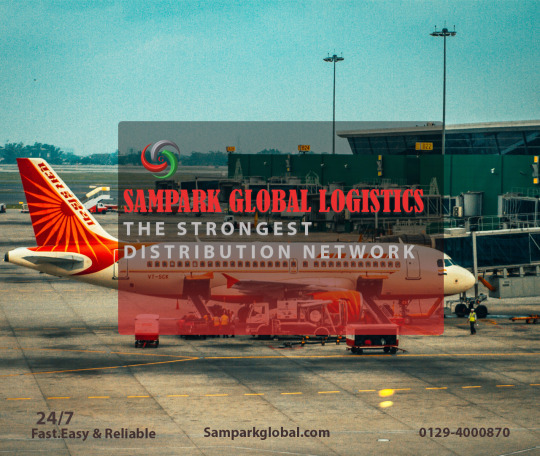
#logistics#logistics company#logisticsmanagement#delhi#cargo carrier#air freight logistics#rail freight transport#multimodal service
1 note
·
View note
Photo

Two freight locals meet in Long Island City
November 1986
#lirr#long island rail road#mta#metropolitan transportation authority#1986#trains#freight train#history#long island city#queens#new york city#new york
15 notes
·
View notes
Text
Best Logistics company in Chennai , India.

Click here for our services
www.blisslog.com
2 notes
·
View notes
Text
http://www.tmxintermodal.com/
Phone: (833) 307-3700
Address: 1532 W F St, La Porte, TX 77571
Email: [email protected]
TMX Intermodal is an asset based trucking company. providing fast and accurate container drayage service from New Jersey Ports, New York Ports, Norfolk Ports, Houston Ports, Wilmington Ports, Charleston Ports, Savannah Ports, Jacksonville Ports, Atlanta Rails, Mobile Ports, Boston Ports, Houston Ports Philadelphia Ports, Baltimore Ports, and Richmond Ports..
#New York Ports#Norfolk Ports#Houston Ports#Wilmington Ports#Charleston Ports#Savannah Ports#Jacksonville Ports#Atlanta Rails#Mobile Ports#Boston Ports#Houston Ports Philadelphia Ports#Baltimore Ports#and Richmond Ports#Drayage trucking Houston ports#Top carriers in Houston#Drayage provider in Houston#best intermodal companies for owner operators#sidelifter near me#overweight container service#Damaged Container Drayage In Houston#online freight rates#online freight rates Houston#fcl trucking Houston#liquor transport carriers Houston#Asset based carrier In Houston#Asset based carrier#Loadmatch directory#Houston port Authority#Houston port customs#Triaxle drayage near Houston
1 note
·
View note
Text
PROS AND CONS OF VARIOUS RAIL FREIGHT CAR TYPES FOR COMMODITIES

Rail transportation plays a key role, facilitating the efficient movement of goods across vast distances. From raw materials to finished products, efficient transportation of these goods is a crucial component of a thriving economy. Among the myriad options available, various rail freight cars emerge as a reliable and economical solution for hauling commodities. However, like any mode of transportation, each rail freight car type presents its pros and cons, requiring careful consideration to optimize the shipping process.
Choosing the appropriate train freight car is a critical decision that can significantly impact operational costs, transit times, and the overall effectiveness of the supply chain. By understanding the strengths and weaknesses of various freight car types, businesses can make informed choices and leverage the advantages that best align with their specific transportation needs.
The Different Types of Rail Freight
Boxcars
Boxcars are the most recognizable types of rail freight car. These enclosed rectangular cars offer maximum protection from the elements and security for your cargo. They’re ideal for transporting dry, palletized goods like machinery, electronics, and consumer products.
Pros:
Secure and weatherproof
Versatile for various palletized goods
Large capacity
Cons:
Not suitable for bulk materials
Loading and unloading can be time-consuming
Hopper Cars
Hopper cars are designed for bulk commodities like grain, coal, and sand. These open-top cars feature hopper doors at the bottom for easy unloading. Some variations include covered hoppers for weather-sensitive materials like fertilizer or plastics.
Pros:
Efficient loading and unloading of bulk materials
Suitable for heavy cargo
Some variants offer weather protection
Cons:
Not ideal for bagged or palletized goods
Can be susceptible to product loss during transit
Tank Cars
Tank cars are cylindrical steel containers mounted on a railcar frame. They are specifically designed to transport liquids like oil, chemicals, and food products. They have specialized linings and pressurization systems to ensure safe and secure transport.
Pros:
Secure and leak-proof for liquid cargo
Some variations are temperature-controlled for sensitive products
Cons:
Limited to transporting liquids
Require specific loading and unloading facilities
Flatcars
Flatcars are open-frame cars ideal for oversized or odd-shaped cargo that wouldn’t fit inside a boxcar. They can be secured with straps or chains for safe transport. Examples of goods transported on flatcars include construction equipment, vehicles, and large machinery.
Pros:
Versatile for oversized or odd-shaped cargo
It can be loaded from multiple sides
Cons:
No weather protection for cargo
Requires secure fastening of the load
Choosing the Right Rail Freight Car
Selecting the optimal freight car hinges on your specific commodity. Here are some key factors to consider:
The type of commodity: Boxcars are ideal for dry goods, while tank cars are necessary for liquids.
Weight and dimensions: Ensure the car’s capacity can accommodate your cargo’s weight and size.
Protection needs: Does your cargo require weather protection or temperature control?
Loading and unloading facilities: Consider the availability of specialized equipment for specific car types.
Get Your Rail Freight Rolling with Nissin Belgium
As businesses navigate the complexities of train freight transportation, partnering with a reliable logistics provider like Nissin Belgium can be a game-changer. Our team of experienced logistics specialists can help you choose the most suitable freight car for your specific needs. We have a vast network of partners across the globe, ensuring efficient and cost-effective transportation of your cargo.
To discuss your logistics requirements, contact us at + 32 2 751 44 99 or write to us at [email protected].
0 notes
Text
The Environmental Benefits of Intermodal Transportation
Intermodal freight refers to shipping goods using multiple modes of transportation in a load unit designed to easily move between trucks, trains and ships. Smart investments in intermodal infrastructure and operations better connect Canada’s vast landscape while reducing environmental impacts from transporting goods and people compared to past reliance on diesel trucks alone. This article explores how intermodal sustainability of transportation directly enables wider sustainability for communities along emerging corridors in Canada.
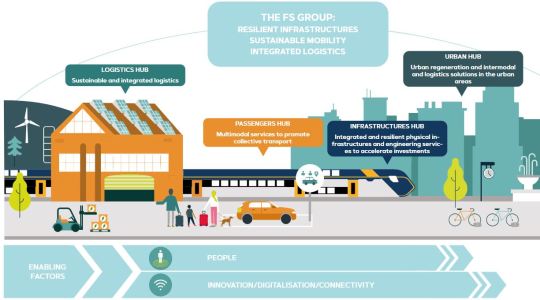
Rethinking Distance and Transportation
Economic realities have traditionally led regions like mining hubs in Saskatchewan or manufacturing centers in Ontario to favor affordable overlow-impact transportation. But climate imperatives today demand smart infrastructure that concurrently serves both economic and environmental priorities.
Intermodal represents the convergence of this twin pursuit.
Standard 53-foot intermodal containers offer a building block that streamlines transferring freight loads seamlessly between rail lines, ocean carriers and commercial vehicles as needed for each point of an integrated journey. Intermodal capabilities spread across the country transform how efficiently goods reach destinations while minimizing waste byproduct generation.
Direct and Indirect Sustainability Gains
Ongoing intermodal infrastructure investments by both the public and private sector directly accelerate progress toward Canada’s greenhouse gas emission goals in three measurable ways:
Less long-haul trucking burns less diesel fuel and reduces emissions by up to 75% for freight route segments replaced by electric rail or low-sulphur vessels designed for efficiency. Rail alone lowers carbon output by 3-5 times on average over highway transportation based on fuel consumed per ton-kilometer shipped.
Optimized container loading and just-in-time operation eliminates wasteful energy usage from inefficient half-full trailers or inventory staging delays. Intermodal precision aligns assets for improved energy utilization per container moved.
Dedicated intermodal hubs allow clean electric or lower-emission support equipment on site like gantry cranes, reach stackers and forklifts rather than relying on diesel truck engines for freight handling.
But beyond direct transportation impacts, enhancing intermodal connectivity powers indirect sustainability benefits that accumulate over time to transform underserved areas of Canada:
Expanded transportation access unlocks economic opportunities for smaller towns and inland ports along new corridors, raising standards of living with quality jobs.
Industry growth around intermodal hubs spreads prosperity more evenly across provinces and territories rather than overburdening a few dense megacities.
Export driven manufacturing gains scale to support secondary domestic supply chain spinoff activity because affordable logistics enable access to global markets.
Over two decades, China provides the blueprint for how targeted transportation infrastructure unlocks widespread sustainability on societal levels not just through immediate efficiencies. Canada would be wise to learn from recent history.
Obstacles Toward Optimized Intermodal Networks
Linking coastal gateways to national rail infrastructure through intermodal inland ports offers incredible potential to responsibly connect communities to the global economy. Yet realization of that vision faces real hurdles requiring coordinated attention:
Security Vulnerabilities – Intermodal supply chain concentration creates risk if disrupted. Resilience capabilities require ongoing investment.
Excess Traffic Burdens – Consolidating freight activity stresses small town infrastructure not built for industrial usage. Traffic management solutions become necessary nearby hubs.
Rural Access Inequities – Not all regions benefit equally from new corridors. Intentionally equitable infrastructure spending and regulatory policy must bridge gaps with subsidies and incentives where purely market-driven investment falls short.
With conscientious mitigation planning, each challenge has answers allowing intermodal capability build-out to improve sustainability for a wider benefitting population.
The Future of Freight in Canada
Intermodal transportation infrastructure enables the efficient, eco-friendly movement of freight across Canada’s vast landscape while directly supporting greener technology transformation and indirectly raising standards of living over time along emerging corridors.
Ongoing public and private partnership to enhance domestic intermodal networks concurrently pursues the twin priorities of economic prosperity and environmental sustainability for communities old and new. By intelligently connecting where Canadians live and produce goods to global trade gateways through multi-purpose containerized shipping, intermodal capability build-out cements green progress for society alongside business.
#air freight#harbor freight#transportation#sea freight#road freight#rail freight#ocean freight#transport technology#freightservices#land freight
1 note
·
View note
Text
Exploring Shipping Modes: Finding the Best Fit for Your Business
Are you seeking clarity on the various shipping modes available and which one aligns best with your business needs? If so, here’s a comprehensive breakdown of the different transportation methods for goods.
In today’s business landscape, the quest for optimal shipping modes is paramount to ensure safe and timely delivery of products to customers. However, with a myriad of options available, decision-making can be overwhelming.
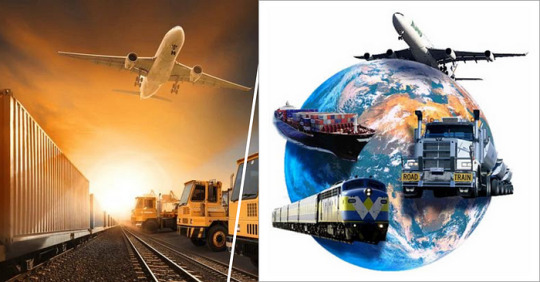
Let’s delve into the specifics:
Air Shipping:
Utilizing robust aircraft, air shipping stands out as the swiftest mode of transport available. Its efficiency, convenience, and minimal natural barriers make it accessible to virtually any location. Notably, air freight is ideal for perishable goods and urgent deliveries, albeit at a higher cost. Despite the expense, air shipping guarantees rapid delivery, with packages reaching destinations worldwide within one to two days.
Land Shipping:
As one of the oldest transportation methods, land shipping remains integral, particularly for domestic and cross-border deliveries. Trucks serve as the primary means for transporting goods via roads, offering ample space for bulk items like vehicles and construction materials. Rail transport presents another viable option, renowned for its cost-effectiveness and expansive network coverage, notably exemplified by India’s extensive railway system. For shorter distances, road shipping via motorbikes, cars, or bicycles accommodates intra-city and hyperlocal deliveries, including heavy items like electronics and appliances.
Sea Shipping:
Sea shipping, synonymous with cargo ships, excels in transporting large quantities of goods, ensuring their safety through containerization. While this mode of transport may not be the fastest, it offers affordability and reliability, making it suitable for commercial and military purposes. Despite longer delivery times, sea shipping provides a cost-effective solution for transporting heavier items over extended distances.
Considerations for Choosing Shipping Modes:
Several factors warrant consideration when selecting the optimal shipping mode for your business:
Cost of Freight:
Budgetary constraints play a pivotal role in determining the most viable shipping option. Rail and sea transport offer economical solutions for longer distances and heavier items, while air transport proves advantageous for perishable goods despite its higher costs. Additionally, factor in ancillary expenses such as insurance charges to gauge overall affordability accurately.
Goods Type:
The nature and size of your products dictate the most suitable shipping mode. Fragile or high-value items benefit from air or land transport, whereas sea and rail transport are preferable for bulkier goods.
Speed and Safety:
Evaluate the speed and safety assurances provided by each shipping mode, considering the specific requirements of your cargo. Seek expert advice to ensure optimal decision-making regarding goods transport.
Conclusion:
In conclusion, understanding the intricacies of various shipping modes — land, sea, and air — empowers businesses to make informed decisions aligned with their logistical needs. By carefully weighing factors such as cost, goods type, speed, and safety, businesses can streamline their transportation strategies for enhanced efficiency and customer satisfaction.
0 notes
Text
Factors to Consider When Searching for Rail Freight Companies
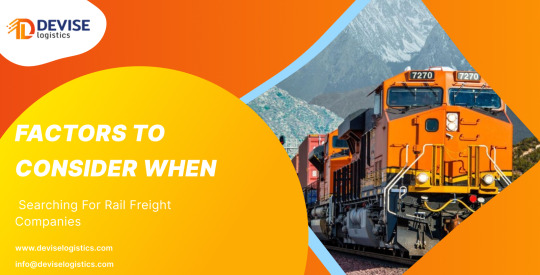
When it comes to transporting goods, especially over long distances, rail freight companies can offer a cost-effective and reliable solution. However, with so many options available, it's important to carefully consider several factors before making a decision. In this blog, we will discuss the key factors to consider when searching for rail freight companies to ensure you make the best decision for your shipping needs.
Experience
One of the first things to consider when looking for a rail freight company is their level of experience in the industry. A company that has been in business for many years is likely to have a solid understanding of the logistics involved in transporting goods by rail. They will be familiar with the challenges that may arise and will have the expertise to handle them effectively.
Reputation in the industry
Another important factor to consider is the reputation of the rail freight company. Work with a company that has a positive track record of delivering goods on time and in good condition. Consider checking reviews from past clients to gain insight into the reputation of the company. Additionally, check if the company is a member of any industry associations or has received any awards for their services.
Safety record
When transporting goods, safety is more important. Make sure to inquire about the safety measures and protocols that the rail freight company has in place. Ask about their safety record. A company with a strong commitment to safety will give you peace of mind, knowing that your goods are in good hands.
Services offered
It's essential to consider what services the rail freight company offers. Verify that they provide door-to-door delivery and are equipped to handle specialized freight, such as hazardous materials or perishable goods. Make sure the company's services align with your specific needs to ensure a smooth and efficient transportation process.
Pricing and transparency
Pricing is a crucial factor to consider when choosing rail freight companies. Get an estimate from multiple companies and compare their pricing structures. Additionally, look for a company that is transparent about their pricing and clearly outlines all costs involved.
Customer service
Consider the level of customer service provided by the rail freight company. It is essential to collaborate with a company that demonstrates responsiveness, effective communication, and attentiveness to meet your requirements. Ask about their customer service policies and how they handle any issues or concerns that may arise during the transportation process.
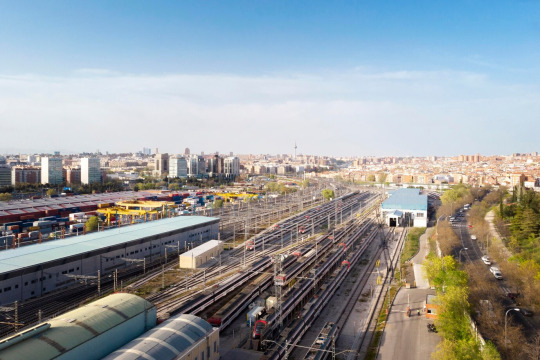
When searching for rail freight companies, it's important to consider factors such as experience, reputation, safety record, services offered, pricing, and customer service. By taking the time to carefully evaluate these factors, you can ensure that you choose a reliable and trustworthy company to handle your transportation needs. By using the service of Devise Logistics, companies can monitor and track shipments to improve their efficiency.
#Rail Freight Companies#rail freight#rail freight transportation#warehousing#logistics#warehouse#freight forwarding#warehousing services
0 notes
Text
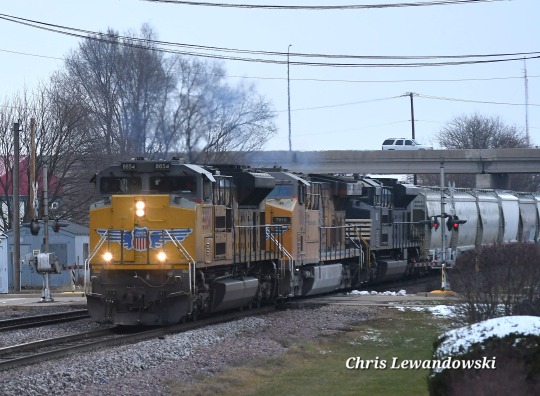
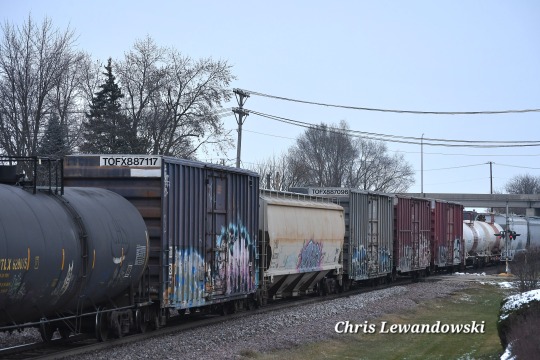
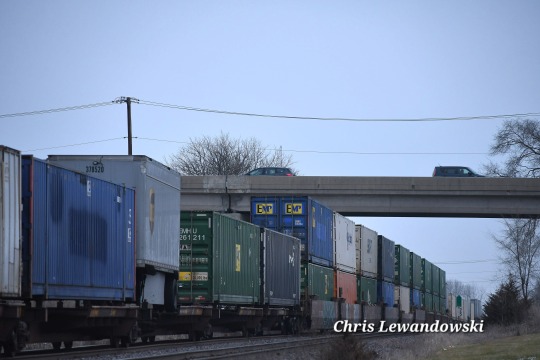
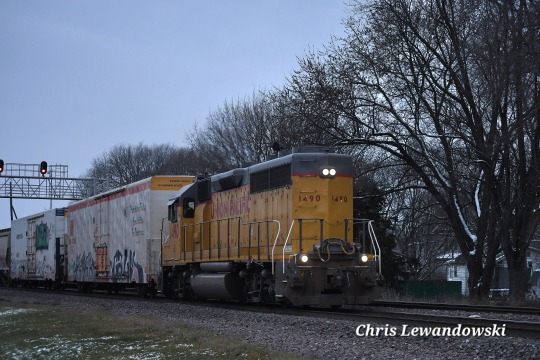




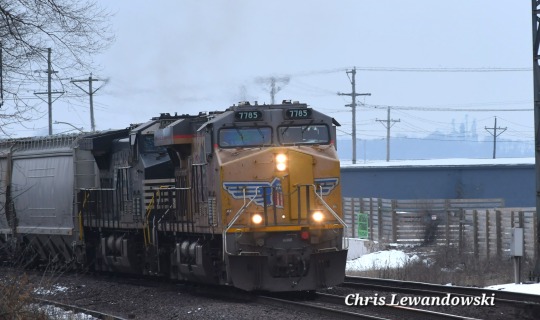
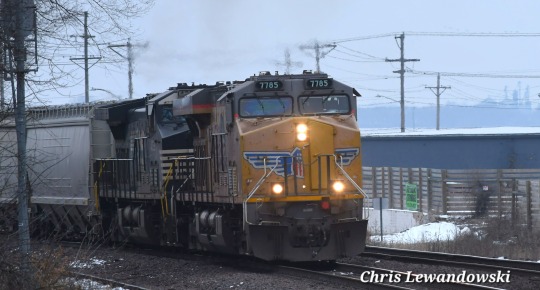
MALG3X, LPG04, and MG3AH at the world-famous UP/BNSF Diamond in Rochelle. First time the new camera has been to Rochelle! Part 2 coming soon.
#railfanning#trains#freight train#passenger train#trainspotting#transportation#hobby#photography#my photos#my pics#rails
1 note
·
View note
Photo

LIRR 151, Pinelawn, NY
LIRR 151 is in the hole on the single track mainline. The main was electrified thru here to Ronkonkoma in 1988, and double track from Farmingdale to Ronkonkoma was completed in 2018.
7-27-1977
#lirr#long island rail road#mta#metropolitan transportation authority#1977#trains#freight train#history#pinelawn#new york
8 notes
·
View notes
Text
Advantages and Disadvantages of Using Shipping Containers for Transport
In a world that thrives on global trade, the shipping container has transformed the way goods are transported across continents. With their robust metal exteriors and standardised sizes, these rectangular boxes have made their mark on roadways, railways and oceans alike. But like all innovations, shipping containers come with their own set of advantages and disadvantages that influence the efficiency, cost-effectiveness, and environmental impact of goods transportation.
Advantages of Using Shipping Containers
Standardisation and compatibility: One of the most significant advantages of shipping containers is their uniform size and design. This standardisation allows for seamless integration across various modes of transportation. Whether it's loaded onto a lorry, placed on a train or stacked onto a ship, a shipping container fits perfectly, reducing the need for constant repackaging and handling.
Efficient loading and unloading: Containers are designed to be easily loaded and unloaded, streamlining the process and reducing the time required at each transportation juncture. This results in quicker turnaround times, which in turn lead to improved supply chain efficiency.
Protection and security: Shipping containers are built to withstand the rigours of long journeys at sea and rough handling during loading and unloading. This protective feature ensures that goods remain secure and intact, reducing the risk of damage or theft.
Modularity and flexibility: Containers can be easily stacked on top of each other, maximising the use of space on ships and at storage facilities. This modularity also allows for flexible shipping options, accommodating a wide range of cargo sizes and types.
Reduced pilferage and loss: The closed and sealed nature of shipping containers makes it difficult for unauthorised access, reducing the chances of theft and loss compared to traditional open cargo transport methods.
Disadvantages of Using Shipping Containers
Initial investment and maintenance: Acquiring and maintaining a fleet of shipping containers involves a substantial upfront cost. Additionally, these containers require regular maintenance to ensure their structural integrity and prevent corrosion.
Environmental impact: While shipping containers have played a pivotal role in globalisation, the increased reliance on them has led to concerns about their environmental impact. Container ships, for example, emit large amounts of greenhouse gases, contributing to climate change.
Inefficient use of space: Despite their modularity, shipping containers can sometimes lead to inefficient use of space, particularly when transporting smaller quantities of goods. This can result in extra costs and energy consumption.
Limited accessibility: In some regions, especially landlocked areas, the use of shipping containers for transportation can be challenging due to limited access to ports or suitable infrastructure for container handling.
Specialised cargo handling: Certain types of cargo, such as perishable goods or hazardous materials, require specialised storage conditions that may not be easily accommodated by standard shipping containers.
Shipping Containers Pros and Cons
Shipping containers have undoubtedly revolutionised the world of goods transportation, facilitating efficient movement of products across roadways, railways and oceans. However, these advantages must be balanced against the challenges of high initial costs, environmental concerns, and limitations in certain transportation scenarios.
#container freight#freight#shipping#ships#logistics#transportation#rail transport#container shipping
0 notes
Text
Rail Freight Companies Australia
Streamlined Logistics: The Benefits of Using Freight Forwarding Services!
Reliable and cost-effective interstate freight solutions are essential for businesses to reach customers in different states, expand their market reach, and maintain a competitive edge in the market.
However, managing the logistics of transporting goods across state borders can be a complex and time-consuming task. This is where freight forwarding services come into play. By outsourcing their logistics needs to freight forwarders, businesses can benefit from streamlined operations and a wide range of advantages.
In this blog, we will explore the benefits of using freight forwarding services and how they contribute to streamlined logistics.

Expertise and Industry Knowledge:
Freight forwarding services offer the expertise and industry knowledge required to navigate the complexities of logistics operations. They understand the intricacies of transportation regulations, customs procedures, and documentation requirements.
With their in-depth knowledge, they can effectively handle the logistics processes, ensuring compliance and reducing the risk of delays or errors. Their expertise helps businesses optimize their supply chain and achieve seamless logistics operations.
Enhanced Supply Chain Visibility and Tracking
One of the key benefits of using freight forwarding services is the enhanced visibility and tracking capabilities they provide throughout the supply chain.
Freight forwarders leverage advanced technology and tracking systems to monitor the movement of goods from pickup to final delivery. This real-time visibility allows businesses to track shipments, monitor transit times, and proactively manage potential disruptions or delays.
The ability to access accurate and up-to-date information enhances supply chain visibility, improves inventory management, and enables better customer communication.
youtube
Customs Expertise and Compliance
Navigating customs procedures and compliance requirements can be challenging when dealing with interstate freight. Freight forwarding services have a deep understanding of customs regulations and can ensure smooth customs clearance for businesses.
Whether you are using Road freight transport or coastal freight services, they will handle the necessary documentation, ensuring compliance with the relevant laws and regulations.
This expertise minimizes the risk of delays, penalties, or shipment seizures due to non-compliance, allowing businesses to focus on their core operations with confidence.
Time and Cost Savings
Using freight forwarding services can result in significant time and cost savings for businesses. Freight forwarders have established relationships with carriers and negotiate favorable deals on behalf of their clients.
They leverage their expertise in route optimization, carrier selection, and shipment consolidation to maximize efficiency and minimize transportation costs. Outsourcing logistics operations to freight forwarders also allows businesses to focus on their core competencies and save valuable time that would otherwise be spent on managing logistics processes.
Conclusion
In today's competitive marketplace, efficient logistics and streamlined operations are essential for businesses to thrive. Freight forwarding services offer a range of benefits that contribute to the achievement of streamlined logistics.
If you are looking for an Australian Logistics Company that can provide comprehensive freight forwarding services, Austrans is here to help!
With our extensive experience, dedication to customer satisfaction, and commitment to delivering success, we are the trusted partner you need for your logistics needs.
So, instead of wasting time searching for different road and rail freight companies Australia, please take the next step and contact us today!
Look at our homepage to get more information about Australian Logistics Company!
0 notes